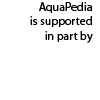Difference between revisions of "Danube River"
From AquaPedia Case Study Database
| [checked revision] | [checked revision] |
| Line 1: | Line 1: | ||
{{Water Feature | {{Water Feature | ||
|Type=watershed or basin, river or creek | |Type=watershed or basin, river or creek | ||
| − | |isabasin= | + | |isabasin=no |
| + | |Basin Area= | ||
| + | |Average Basin Discharge= | ||
| + | |Maximum Basin Discharge= | ||
| + | |Maximum Basin Discharge= | ||
| + | |Basin Population= | ||
| + | |Riparian Basin= | ||
| + | |Located in Riparian= | ||
|Water Feature Area= | |Water Feature Area= | ||
|Average Discharge= | |Average Discharge= | ||
|Maximum Discharge= | |Maximum Discharge= | ||
|Minimum Discharge= | |Minimum Discharge= | ||
| − | |Length= | + | |Water Feature Length= |
|Within Basin= | |Within Basin= | ||
| − | | | + | |Aquifer Description= |
| − | | | + | |Recharge Rate= |
| − | |Description=The Danube | + | |Recharge Rate Low= |
| + | |Recharge Rate High= | ||
| + | |Recharge Zone Area= | ||
| + | |Groundwater Resource Volume= | ||
| + | |Within System= | ||
| + | |Description=The Danube is the major river within the [[Danube River Basin]], in the heart of central Europe and is Europe's second longest river, at a length of 2,857 km. The drainage basin drains 817,000 km2 including all of Hungary, most of Romania, Austria, Slovenia, Croatia, and Slovakia; and significant parts of Bulgaria, Germany, the Czech Republic, Moldova, Serbia, and Ukraine. Bosnia and Herzegovina, and small parts of Italy, Switzerland, Albania and Poland are also included in the basin. The Danube River discharges into the Black Sea through a delta, which is the second largest wetland area in Europe.<ref name = "TFDD 2012" >Product of the Transboundary Freshwater Dispute Database, Department of Geosciences, Oregon State University. Additional information about the TFDD can be found at: http://www.transboundarywaters.orst.edu/research/case_studies/Denube_New.htm </ref> | ||
|External Links={{External Link | |External Links={{External Link | ||
|Link Text=Transboundary Freshwater Dispute Database (TFDD) (2012). Oregon State University. Danube River Basin Case Study. | |Link Text=Transboundary Freshwater Dispute Database (TFDD) (2012). Oregon State University. Danube River Basin Case Study. | ||
| Line 28: | Line 40: | ||
|Mpov=No | |Mpov=No | ||
}} | }} | ||
| + | |Length= | ||
|Area=790,100 | |Area=790,100 | ||
}} | }} | ||
Latest revision as of 15:38, 10 September 2014
Danube River Facts
Type:watershed or basin, river or creek
view/browse all article properties
Contents
[hide]The Danube is the major river within the Danube River Basin, in the heart of central Europe and is Europe's second longest river, at a length of 2,857 km. The drainage basin drains 817,000 km2 including all of Hungary, most of Romania, Austria, Slovenia, Croatia, and Slovakia; and significant parts of Bulgaria, Germany, the Czech Republic, Moldova, Serbia, and Ukraine. Bosnia and Herzegovina, and small parts of Italy, Switzerland, Albania and Poland are also included in the basin. The Danube River discharges into the Black Sea through a delta, which is the second largest wetland area in Europe.[1]
Case Studies linked to Danube River
Articles linked to Danube River
| Riparians | Water Features |
|---|---|
|
|
|
| Projects and Initiatives | Agreements and Treaties |
|---|---|
|
|
|
External Links
- Transboundary Freshwater Dispute Database (TFDD) (2012). Oregon State University. Danube River Basin Case Study. — The Transboundary Freshwater Dispute Database (TFDD) is a database intended for use in aiding the process of water conflict prevention and resolution. We have developed this database, a project of the Oregon State University Department of Geosciences, in collaboration with the Northwest Alliance for Computational Science and Engineering.
- ^ Product of the Transboundary Freshwater Dispute Database, Department of Geosciences, Oregon State University. Additional information about the TFDD can be found at: http://www.transboundarywaters.orst.edu/research/case_studies/Denube_New.htm



